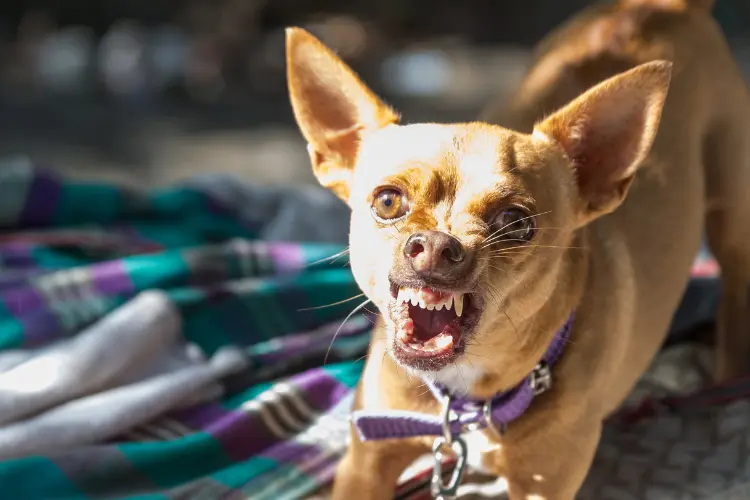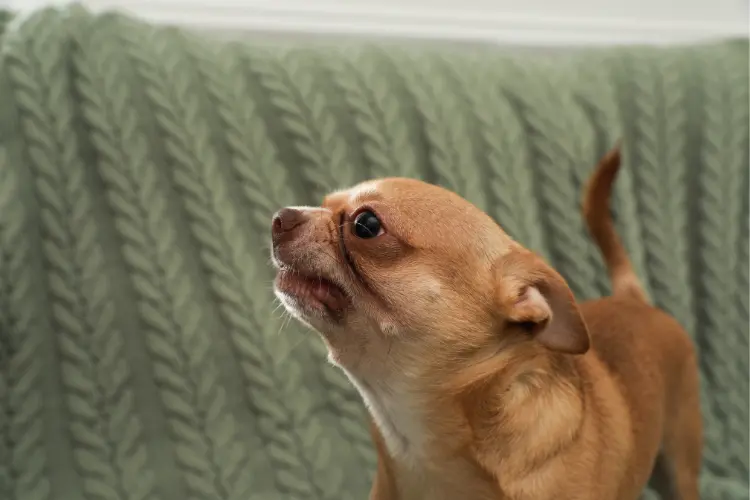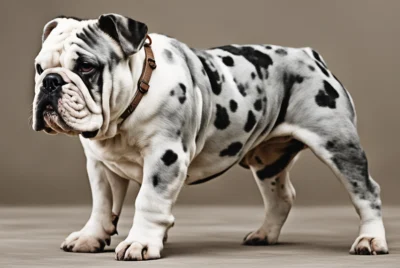How to Train a Chihuahua Not to Be Aggressive: 20 Essential Tips
Are you struggling with an aggressive Chihuahua? Does your adorable small dog exhibit signs of fear, insecurity, or territoriality, leading to unwanted aggressive behavior?
Dealing with Chihuahua aggression can be challenging and frustrating for most dog owners, but the good news is that there are effective techniques on how to train a Chihuahua not to be aggressive. In this guide, I will provide you with 20 essential tips that will help you transform your Chihuahua into a well-behaved, non-aggressive companion.
Why Are Chihuahuas So Aggressive?
Chihuahua dogs can exhibit aggression due to their territorial nature. They tend to be protective of their personal space and may confront anyone who encroaches upon it.
Additionally, Chihuahuas can be cautious and take time to build trust with people, especially if they are older than one year. It is important for owners and acquaintances to approach them slowly and gradually earn their trust over time.
Identify the Root Cause
To manage aggressive behavior in your Chihuahua, identify the root cause. If anxiety is the issue, help your dog build confidence and gain experience. If your Chihuahua dog is displaying dominance, assert your leadership to promote respectful behavior towards everyone.
In the case of possessiveness, teach your dog to be well-socialized, replacing territorial aggression with appropriate behavior. Your Chihuahua should be comfortable with others approaching and should give up toys or food easily.
Basic obedience training commands like ‘sit’, ‘stay’, ‘down’, and ‘come’ are vital to establish leadership and setting clear expectations, aiding in reducing anxiety and territorial behaviors.

How to Train a Chihuahua Not to Be Aggressive?
Training a Chihuahua not to be aggressive can be achieved by applying these 3 methods. First is the Alternate Behavior Method. Here’s a step-by-step guide:
Alternate Behavior Method
- Teach Basic Commands: Begin by teaching your Chihuahua basic obedience commands such as ‘sit-stay’ or ‘down-stay’. Do this in a calm, distraction-free area. Reward your dog with a treat each time it correctly follows your command.
- Introduce Distractions: Once your dog has mastered the commands in a quiet environment, start practicing in different areas like the dog park with more distractions to reinforce the behavior.
- Switch to Non-Food Rewards: Gradually replace treats with verbal praises and affection, encouraging your dog to obey commands for non-food rewards.
- Utilize Commands During Aggressive Behavior: If your Chihuahua begins to show signs of aggression, distract it by giving the ‘sit-stay’ or ‘down-stay’ command. This will help interrupt and divert the aggressive behavior.
- Reward for Positive Behavior: When your dog follows the command and ceases the aggressive behavior, provide praise. This reinforces the desirable behavior and offers an alternative response to aggression.
Extinguish Aggression Method
In addition to the Alternate Behavior Method, you can use the Extinguish Aggression Method to train your Chihuahua not to be aggressive:
- Alter the Environment: If your Chihuahua becomes aggressive in certain situations, like when others approach while he’s on your lap, prevent these situations from happening. For instance, don’t let your Chihuahua sit on your lap when others are around.
- Distract from Aggressive Behavior: If your Chihuahua begins to act aggressively, distract him immediately with a noise maker or a firm “no”.
- Reward Calm Behavior: Praise your Chihuahua and give him a treat when he behaves calmly and friendly. This positive reinforcement encourages good behavior.
- Remove from the Situation: If your Chihuahua’s aggressive behavior continues, ignore him and, if necessary, remove him from the situation. This could involve placing him in a crate or another room until he calms down.
- Raise Expectations: Gradually increase the length of time you expect your Chihuahua to remain calm before he gets a reward, attention, or affection. This helps teach him patience and better control over his behavior.
Establish Leadership Method
Another method to handle aggressive behavior in your Chihuahua is the Establish Leadership Method. Here are the steps:
- Teach Obedience: Start with basic obedience commands like ‘sit’, ‘stay’, ‘come’, ‘down’, and ‘heel’. This instills discipline and shows your dog that you are in control.
- Be the Provider: Make sure your Chihuahua knows you are the provider by making him sit and wait while you prepare his food. Sit with your dog while he eats to affirm your position. Also, practice taking away and returning the food, so your Chihuahua learns to accept this action.
- Socialize Your Dog: Gradually introduce your Chihuahua to other people, dogs, and animals in a non-threatening environment. Reward positive interactions and, in case of aggressive behavior, remove your dog from the situation while you continue interacting with others. During socialization, keep your dog at floor level to prevent him from feeling dominant.
- Don’t Reward Aggression: Avoid soothing or comforting your Chihuahua when he’s acting aggressively. This could unintentionally reinforce his anxiety or aggressive behavior. Do not pick up or hold your dog when he’s anxious or aggressive.
- Reward Proper Behavior: Praise and reward your Chihuahua for behaving positively in situations that previously made him anxious or aggressive. Gradually expose him to new experiences, sights, and sounds at a pace he is comfortable with.
If you’re wondering when to start training a puppy, the earlier, the better! Establishing leadership and introducing crate training from a young age can help mitigate aggressive tendencies and lead to a well-behaved pet. Explore our resources on when to start training a puppy to ensure a harmonious relationship with your furry friend!

20 Tips on Mitigating Aggressive Behavior in Chihuahuas
Initiate Behavioral Training
Begin by engaging them in systematic behavioral training, which will not only stimulate their minds but also equip them with the necessary skills to exhibit good conduct.
Increase Outdoor Activities
Enhance their exposure to outdoor environments, as frequent playtime can assist in alleviating pent-up energy which may otherwise be channeled into aggression.
Daycare For Socialization
Enrolling your Chihuahua in a reliable daycare center can be beneficial for their social skills and may decrease tendencies for aggression due to exposure to different dogs, like pit bulls or small dogs.
Regular Vet Check-ups
Regular veterinary visits are crucial to ensure your pet’s health, as undetected health issues can often lead to behavioral changes such as aggression.
Detect Fear Signs
Be vigilant about signs of fear in your pet. Fear can trigger aggressive responses, so identifying the source of their fear can help manage their aggression.
Respect Their Personal Space
Provide your Chihuahua with their personal space where they can retreat when feeling overwhelmed, thereby reducing instances of aggression.
Consider Spaying/Neutering
Spaying or neutering your Chihuahua can help lessen their aggressive behavior, as it mitigates hormonal influences that may cause such behaviors.
Avoid Overcrowding
Keeping the number of pets in the house to a minimum will ensure your Chihuahua doesn’t feel threatened or overwhelmed.

Maintain a Clean Environment
Regularly tidying up your house can remove potential triggers of aggression like unfamiliar smells or cluttered spaces.
Promote Social Interaction
Encourage your Chihuahua to interact with your friends, which can improve their comfort level around humans.
Provide a Secure Crate
A secure and comfortable crate can serve as a refuge for your Chihuahua, reducing their stress levels and subsequently their aggression.
Maintain a Calm Demeanor
Your pet will often mirror your emotional state. By staying calm, you’ll help create an atmosphere of tranquility that discourages aggressive behavior.
Consider a Muzzle
If aggression persists, a dog-appropriate muzzle can be a temporary solution to prevent biting, but it’s important to address the root cause of the aggression.
Explore Anxiety Medication
If your vet approves, anxiety medications can help manage your pet’s stress levels and thereby reduce aggression.
Limit External Stimuli
If your Chihuahua reacts aggressively to outside triggers, blocking their view to the outside world might help to reduce this behavior.
Adopt a Structured Routine
Keeping a regular and predictable schedule for activities like feeding and walks can decrease anxiety.
Distract With Toys
Use interactive toys as a form of distraction for not only your Chihuahua but also for pet dogs like pit bulls and other dogs. These toys keep them busy and help in draining their energy, which can reduce aggressive behavior for those breeds that might need it, such as a pit bull.

Avoid Over-Indulgence
Although it’s tempting to pamper your pet, moderation is key, whether you own a Chihuahua, a pit bull, or any other dog. Overindulgence can lead to behavioral issues like aggression, especially in pet dogs that have a reputation for being strong-willed.
Assert Your Leadership
Demonstrating clear leadership will let your Chihuahua know that you’re in control, which can create a sense of security.
Reward Positive Behavior
Reinforce your Chihuahua’s good behavior by rewarding them with treats, praise, or extra playtime. This positive reinforcement technique encourages them to repeat good behavior, helping to gradually replace any aggressive tendencies with more desirable conduct.
Conclusion
Curtailing aggressive behavior in Chihuahuas, like any other dogs, requires patience, persistence, and a comprehensive understanding of your pet’s needs. By following our essential tips and methods on how to train a Chihuahua not to be aggressive you can create a stable and secure environment that minimizes stress and anxiety for your Chihuahua.
Every dog is unique, and what works for one might not work for another. It’s always about understanding your pet’s individual needs and responding in the most effective, compassionate way possible.




